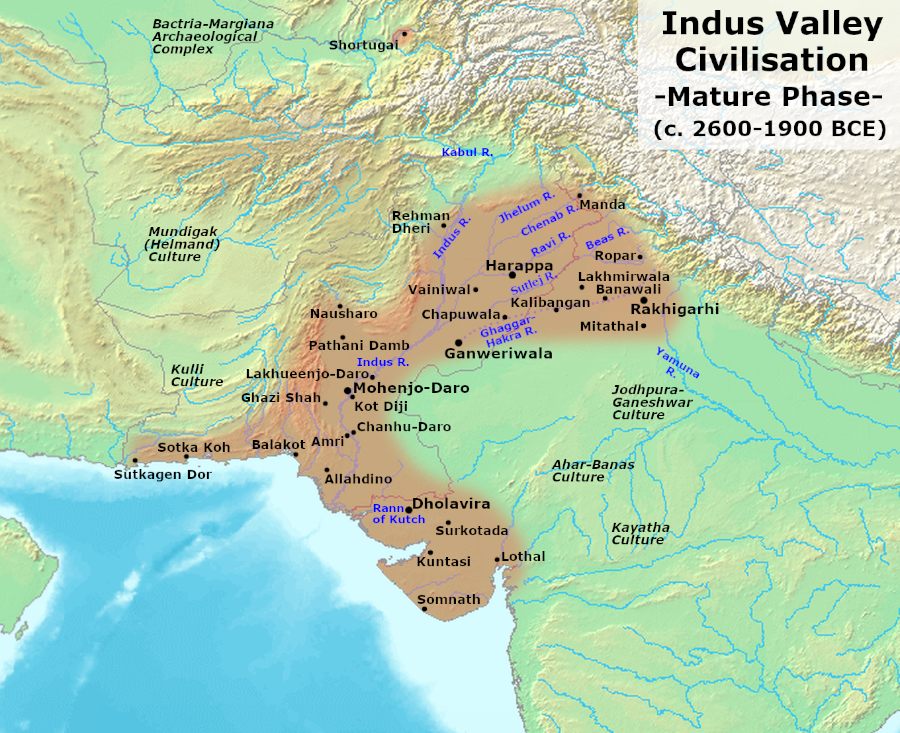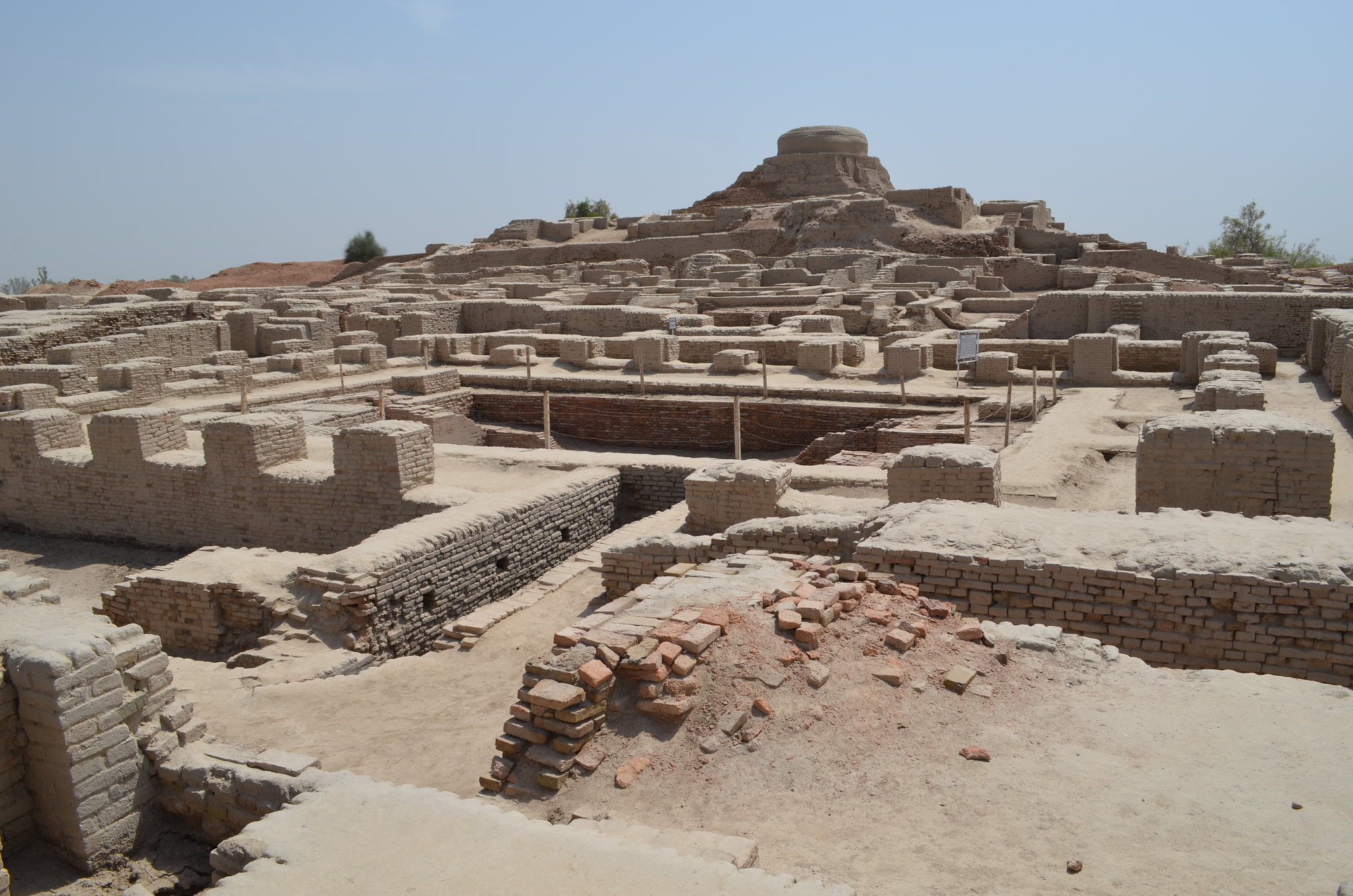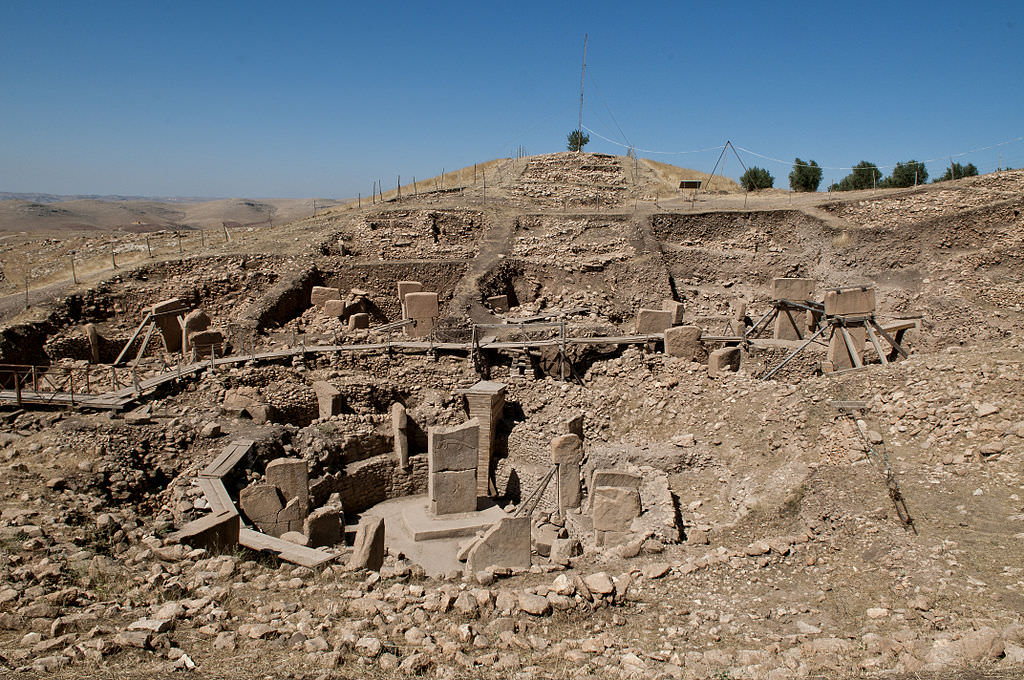Introduction
Travel back in time to a time when northwest India and Pakistan’s ancient towns around the Indus River were thriving more than 4,000 years ago. This was the fascinating urban civilisation known as the Indus Valley Civilization, which existed between 3300 and 1300 BCE. It’s known for its clever city planning, impressive buildings, and a puzzling script that still surprises experts.
We will examine this civilization’s wonders along the way. We’ll learn about Indus Valley way of life and how they conducted trade with other countries, from their clever city designs to the interesting goods they produced. We’ll also try to discover the reason for their eventual disappearance and try to make sense of the enigma surrounding their unintelligible writing. We may get a glimpse into a period in human history when magnificent things were being created and the foundations for the modern world were being laid by studying the Indus Valley Civilization.

Discovery of Indus Valley Civilization
The Indus Valley Civilization, also known as the Harappan Civilization, was discovered by explorers in Pakistan during the 1920s by accident while looking for ancient city remains. Between 3300 and 1300 BCE, these settlements featured tidy streets laid out in a grid pattern and a distinctive atmosphere. Similar city designs, pottery, and symbols let researchers draw connections even if there are no “Welcome to Indus Valley” signs still standing. We’re putting together pieces of a fascinating puzzle to understand these ancient urbanites and their extraordinary environment.

Urban Planning and Architecture of Indus Valley
Consider the best city you know – now imagine it thousands of years ago! The people of the Indus Valley were experts in urban planning. Their homes had more than one level, and their streets were laid out like flawless grids. Even the bathroom was unique, with smooth brickwork and a clever drainage system. Are you serious? These shrewd architects were active between 3300 and 1300 BCE. Their well-planned and modern cities serve as a reminder of how intelligent and inventive people were even then.
Cultural Treasures: Ancient Art and Objects
Let’s take a look back in time to see what the inhabitants of the Indus Valley left behind! They produced fascinating items like ceramics, sparkling jewelry, and miniature sculptures. Some of these little statues depict creatures, including humans and gods. Imagine what they believed in and how they dressed! These artifacts, uncovered in their ancient towns, reveal details about their daily routines and the things that were important to them. These artifacts provide us a closer connection to the people who lived in this remarkable civilization, even though it was a very long time ago, and they also give us some insight into their culture.

Trade and Economy of Indus Valley
The inhabitants of the Indus Valley resembled early explorers. They traded with distant nations and did not merely remain in one spot! Consider obtaining sparkling beads from adjacent places or even items from Mesopotamia, which is modern-day Iraq. These early merchants were skilled at navigating waterways and trading networks to procure cool goods from various locations. They traded items they didn’t need for pottery, jewelry, and other items. It’s like a window into a time when trade allowed people from many regions to meet and exchange cool items from their cultures.
Secret Signs: Unlocking Ancient Writing
Imagine creating a secret code that is impossible for anyone to figure out today. The inhabitants of the Indus Valley did that! They used a unique writing system that we are unable to comprehend. Thoughtful professionals have attempted to decipher the code, it remains a mystery. Imagine that those symbols included narratives, concepts, and messages. What does this script say, even though we know they used it on seals and other things? It acts as a closed door to their minds. We don’t have the key, but even without it, it serves as a reminder of how much more there is to understand about their fascinating world.
Vanishing Act: The Disappearance of Indus Valley
Why did the towns of the Indus Valley disappear remains a mystery. Some claim that it was caused by shifting rivers or even by climatic changes. Others believe significant changes in trade have ruined everything. There is also the idea that having too many people in one place caused problems. These are comparable to several conclusions to a story that we are attempting to understand. We know that the cities began to get deserted approximately 1300 BCE. These theories provide us with insights into how fragile a civilization’s balance can be and how even prehistoric societies encountered difficulties, even though we may not have the complete answer.

Ancient Secrets: The Puzzle of the Past
Consider discovering an old puzzle. The Indus Valley Civilization left us with that. First, we are unable to read their script. It resembles a locked-up secret language. Then there is their sudden extinction; why did they vanish? Nobody is certain. how about their religious views? a puzzle. They didn’t leave us with a manual, but they did leave us with interesting questions about the past. These puzzles serve as a reminder that even in the past, individuals led complicated lives, and that sometimes the solutions are lost in the sands of time.
Today’s Discoveries: Learning About the Past Now
Guess what? We can learn more about the Indus Valley thanks to modern technology. Science-based techniques and cool devices allow specialists to look beneath the surface without having to dig everything up. They uncover outdated material buried in the dirt, similar to historical hints. Computers also assist in understanding their script’s coding. Even if we are unable to communicate with those ancient people, we are still learning more about them through the things they left behind. Using cutting-edge techniques and creative solutions, it’s like playing history detective as you piece together the incredible tale of the Indus Valley Civilization.




